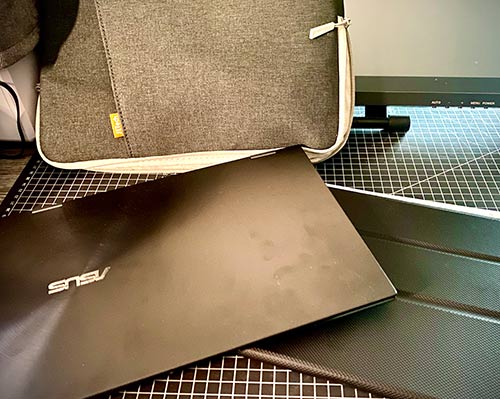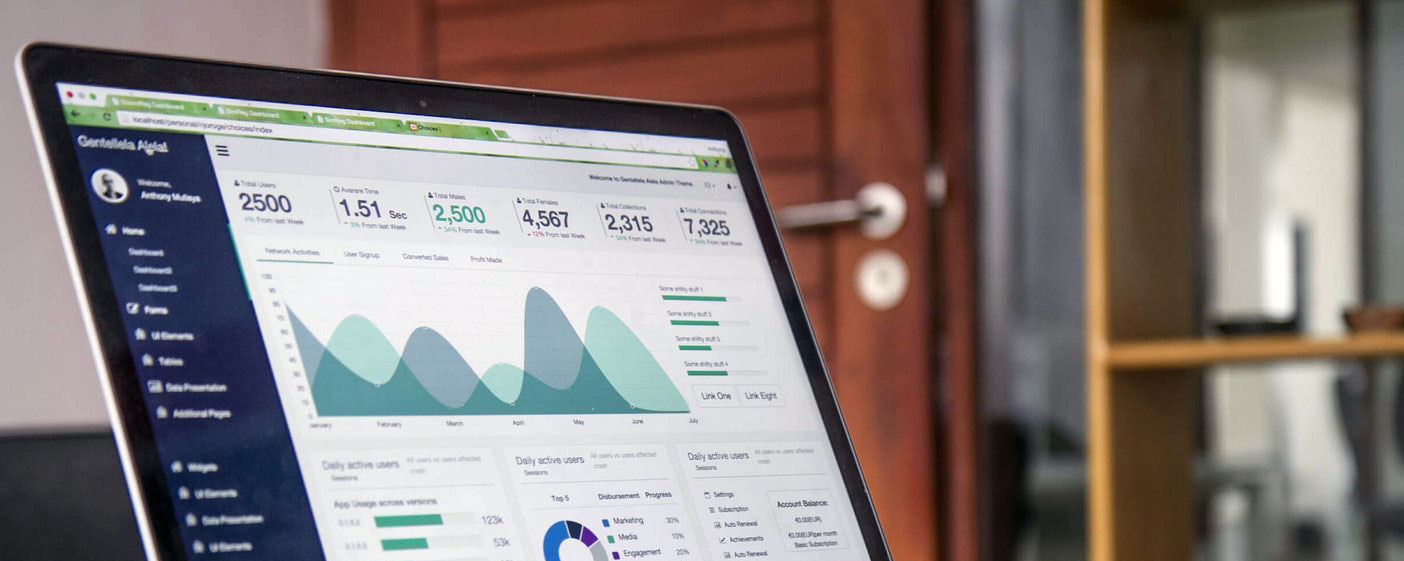Top Tips for Digital Nomads - Working Away with Online Courses

Do you want to travel the world and earn money whilst doing it? If the answer is yes read this blog and get most of the big questions answered!

If you're new to teaching online but have heard about how bloggers, influencers, and teachers can travel the world, you might feel envious of this freedom and think it's difficult. Perhaps you're accustomed to saving up all year to travel to distant parts of the world and believed there was no other option.
Well, this blog will address what you need to take your business on the road. Are you ready to take on the challenge?
Great, let's do this!
First things first, if you already have an online presence and a school, it's going to be easier, and I suggest building a solid base of followers before taking the leap. If you're at that point, don't hesitate, let's go...
The information I'm providing is from an intensive two-month test run, during which I stayed in many places, each with varying degrees of success and challenges. This serves as a perfect case study and took place all over Mexico. From this experience, I've compiled a list of what you need to run your own business remotely from anywhere in the world. How exciting, I hear you cry!"
These changes should help improve the flow and clarity of your text.
Let's Start with The Basics Kit

The key element here is to travel light, so small and powerful. I've opted for the ASUS Zen Flip Book. At 13", it's light and powerful enough to get the job done, and it also has excellent battery life (note to self: remember the travel adaptors!).
Laptop Spec: ASUS ZenBook Flip OLED UX363EA 13.3" Intel EVO Convertible Laptop (Intel i7-1165G7, 16GB RAM, 1TB SSD, Backlit Keyboard, Windows 11) Includes Stylus, USB-C to Audio Jack.
But what about monitor real estate? No worries, I also have a second lightweight monitor, Bluetooth mouse, headphones, and speakers thrown in for good measure! (I'll be using the laptop's built-in camera and mic most of the time.)
As is the Zen way, I will test out all the gear one week before departure.
Now on to files. All files will be backed up to a cloud drive, and essential Zoom backgrounds, etc., are also stored locally on the machine.
The last thing to make sure I pack is my Zenler T-shirts and any swag that I need to take with me.
✔️ So, check on gear and swag!
Why you should do a dry test before traveling: It's always a good idea to road test equipment before traveling. Not only does this pinpoint any potential problems, but it also gives you peace of mind that you have all the equipment you need to set up your studio the way you want it.
In my case, I chose a particularly noisy pub in my hometown of St Ives, 'The Golden Lion.' Obviously, in a hotel environment, I am not going to have loud music and people gradually getting louder with the more alcohol they consume :)
I also chose lunchtime as that's when it's at its busiest, which was probably not the best idea as my final conclusion was not good! But on saying that, I will know what level is manageable and what the equipment can deal with as far as noise reduction, etc.
What I found was that excessive background music is definitely not good. Sitting too close to loud people and generally mixing in a pub or fun-type situation is not good.
I will be mainly in a community open space, and as I get up early, it will most definitely be quiet. The battery life of the computer is about four to five hours, even with the two monitor drain, so that is absolutely fine if there is no power.
The camera copes well in low light levels, and having the headphones and mic built-in will be an asset if I'm speaking or doing anything interactive.
The rucksack I got can just about squeeze in my camera and laptop with the screen, but it's tight. I can live with that for sure, and in any case, I intend to leave my laptop in the hotel during trips, so no dramas there.
The internet in town was not that good, but the test Zoom session at 720 was fine, with a slight stuttering at 1920, so that will be a factor for any live work I do, as far as streams or sessions.
All in all, a successful venture, and I feel much more confident in the hardware, so no last-minute additions or changes are needed.
Great, You're Set! Let's Move On:
As I work with a 13-inch screen, I find that using just one screen is usually sufficient, despite having a second screen available. However, since I'm accustomed to a massive 32-inch 4K, three-screen arrangement at home, adjusting to the laptop's screen is taking some time. Nevertheless, I anticipate that I will become more accustomed to it over time.
During a team meeting, I encountered an issue with my microphone settings when I plugged in my headphones and mic after the meeting had already begun. I learned that it's essential to configure the setup beforehand and not during the session. As the Zenler team emphasizes, it's crucial to test and retest everything beforehand, and I should have known better.
Things to Consider!
What you might be facing here is slow internet with an inconsistent connection, which is understandable when traveling. To counter this, I purchased a local SIM card with data for emergencies. If necessary, I can use my phone as a digital hotspot (which most phones are capable of doing) to access the internet. However, for this blog, I don't require an internet connection since I'm composing it in WordPad to insert into the blog later.
Planning Before Your Trip, Especially If You're Moving Around!
63ebe7e466e14_lg.jpg)
As I'm only traveling for two months, I completed a substantial amount of work before my departure to alleviate any pressure while I'm away. Despite being skilled in time management and self-discipline, I still find it challenging to stay on track at times. To combat this, I've found it helpful to establish expectations and allocate specific timeframes for work. I typically work in the mornings or evenings and set specific goals to accomplish during those times. Adhering to a set schedule has helped me stay on track and productive. As I'm only traveling for two months, I completed a substantial amount of work before my departure to alleviate any pressure while I'm away. Despite being skilled in time management and self-discipline, I still find it challenging to stay on track at times. To combat this, I've found it helpful to establish expectations and allocate specific timeframes for work. I typically work in the mornings or evenings and set specific goals to accomplish during those times. Adhering to a set schedule has helped me stay on track and productive.
Insights from This Test Environment
Typically, a genuine digital nomad would stay in one place for an extended period and supplement their online work with other sources of income. They may work in exchange for accommodation or, if they're successful, rent an apartment. However, I acknowledge that my situation is somewhat extreme since we're frequently moving around, resulting in diverse outcomes. This provides a much more global experience for you to see.
In this section, I will share my process for writing blogs while on the move. Even if you're running a school, this information is still relevant as it highlights key points that can be adapted to any scenario.
64009a2865558_lg.jpg)
Blogging is a great way to share your experiences and knowledge with the world. However, it can be challenging to maintain a consistent schedule and stay organized while traveling. As a digital nomad myself, I've learned some tips and tricks for writing and organizing blogs while on the move.
Choose Your Niche
Blogs don't have to be just about travel. They can cover a wide range of topics, including software, products, or services. If you write about products or software, consider checking for affiliate deals with manufacturers or software houses. These links could generate significant revenue for you. Additionally, think about writing mini guides with affiliate links or promoting your own course memberships. You can offer them for free or for a small fee on platforms like Amazon, providing an excellent opportunity to earn additional revenue and promote your services.
For my blog series, I typically start with a text editor like WordPad or Notes. I ensure it has no fancy editing tools and keep it in plain text format, as I will format it in Zenler itself. The benefit of this approach is that you don't need an internet connection.
Organize Your Media
Next, I organize any media I have, such as videos or images, into a folder with the article. This contains all I need for that post. As I am traveling in Mexico, I have a root folder called 'MEXICO BLOGS,' and within this, individual folders for each post, because keeping your work organized is key. For images, I use a premade template in Canva to output images that are the same size and optimized for the web. As for videos, I upload them to YouTube and embed them.
Use a Simple Canva Template for Blog Cards
For blog SEO and blog cards, I have a template set up in Canva so that I can duplicate, reword, and add new images. This makes it quick to create more articles, and I can also share this template with the team. This is very important if you work in a team, as we do at Zenler.
Focus on Key Features and SEO
Remember not to overload your blog posts with too many images and only focus on the key features discussed in your post. There are different approaches to any blog post. In my case, I am sharing a general journey of my travels across Mexico without delving into too much detail, while also highlighting my working experience in different areas. Another type of blog may be informational, providing details on where to catch buses, key phrases in Spanish, and tips for navigating various places within Mexico. With literally thousands of different formats and monetized options available, it's essential to think carefully about this, as it will be critical for SEO.
Writing and organizing blogs while traveling can be challenging, but with the right tools and organization, it can be done efficiently. By following these tips and tricks, you can create engaging blog content that resonates with your audience and promotes your brand or services. Remember, it's all about consistency and focus. Happy blogging!
Tech Tips whilst Travelling
Working remotely while traveling can be both exciting and challenging. It's great to be able to work from anywhere, but it also means that you might not always have the same resources and setup as you would at home. In this blog post, we'll discuss some common tech problems and tips for working abroad.
One of the biggest challenges when working on the road is the lack of a powerful computer or studio setup. This can be especially difficult when it comes to recording videos or other multimedia content. However, it's still possible to get decent results with some tweaks to your setup.
For example, instead of using a 7-foot green screen, which might not be feasible to carry around, consider framing yourself within a circle shot. This can still give your content a professional look and keep your brand on point. Camtasia is a great tool for this, as it allows for easy editing and outputting of videos.
Another common issue is background noise and camera positioning. To reduce background noise, you can use software to remove it or find a quieter location to record in. As for camera positioning, you might need to get creative and use a table on top of another to achieve the correct height.
Lastly, if you need to record your mobile device for an authentication code or other purposes, consider using an app to record the screen. This way, you can pair up the phone recording with your laptop screen and record on both devices simultaneously.
Remember, working remotely while traveling is all about being adaptable and finding solutions that work for you. With these tips and a bit of creativity, you can overcome tech problems and continue to produce high-quality content from anywhere in the world.
As a digital nomad, planning and researching the areas you intend to visit is essential to ensure a smooth and productive work experience. When visiting places with limited power or internet, you may have limited flexibility in what you can do. Most digital nomads prefer to stay in one place for an extended period and ensure they have all the necessary amenities like reliable internet and power. It is crucial to research the location before embarking on your journey.
Here are some useful tips to help make your journey smoother:
- Always carry spare cables and adapters in case you lose any.
- Invest in a matte screen protector to reduce reflections, which can hinder editing or writing.
- Keep your hardware well protected and avoid leaving it lying around, even in a hotel.
- Back up all your important data to the cloud.
- Get a local SIM for your phone to avoid high roaming charges.
- Keep track of your login credentials for all your accounts.
- Carry wet wipes or cleaning cloths to keep your equipment clean.
- Purchase comprehensive travel insurance to protect yourself and your belongings.
- Learn how to use your phone as a Wi-Fi hotspot in case you need it.
It's essential to remember that not everything will go as planned during your travels. During our trip, we visited multiple places and stayed in 17 hotels. It's unlikely that everything will be smooth sailing, so it's important to be flexible and prepared for any challenges that may arise. By following these tips, you can ensure that your digital nomad journey is smooth and productive.
Zenler hopes you found this Blog useful. Remember to write about it in the FaceBook Group if it was of use to you.
Categories: : Zenler Course Creation
Copyright © 2025 Zenler. All rights reserved.
Terms | Privacy Policy | Cookie Policy | Support
 David Zenler
David Zenler 
